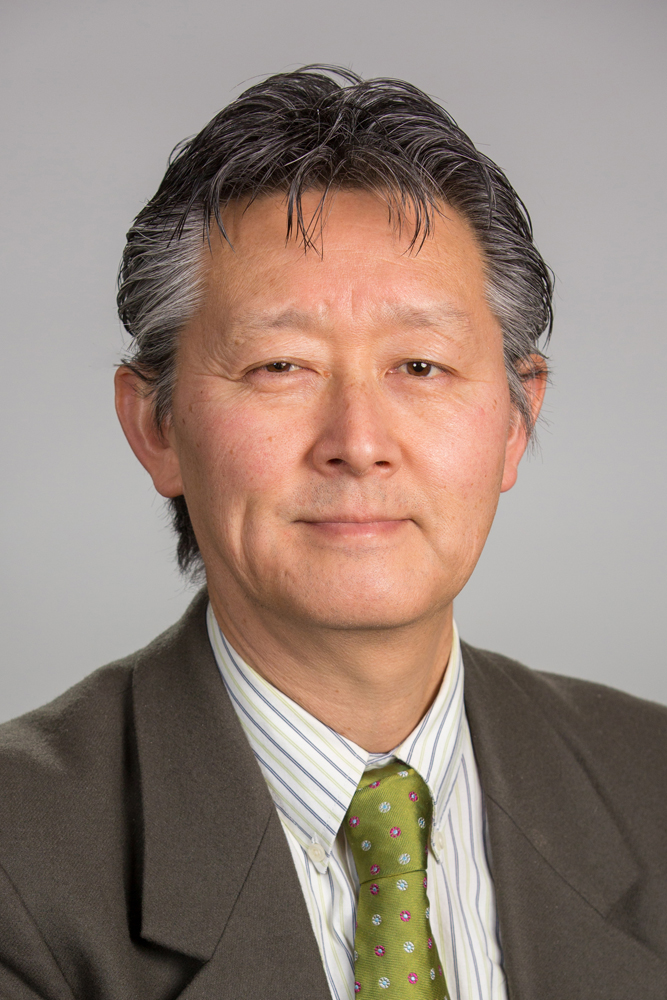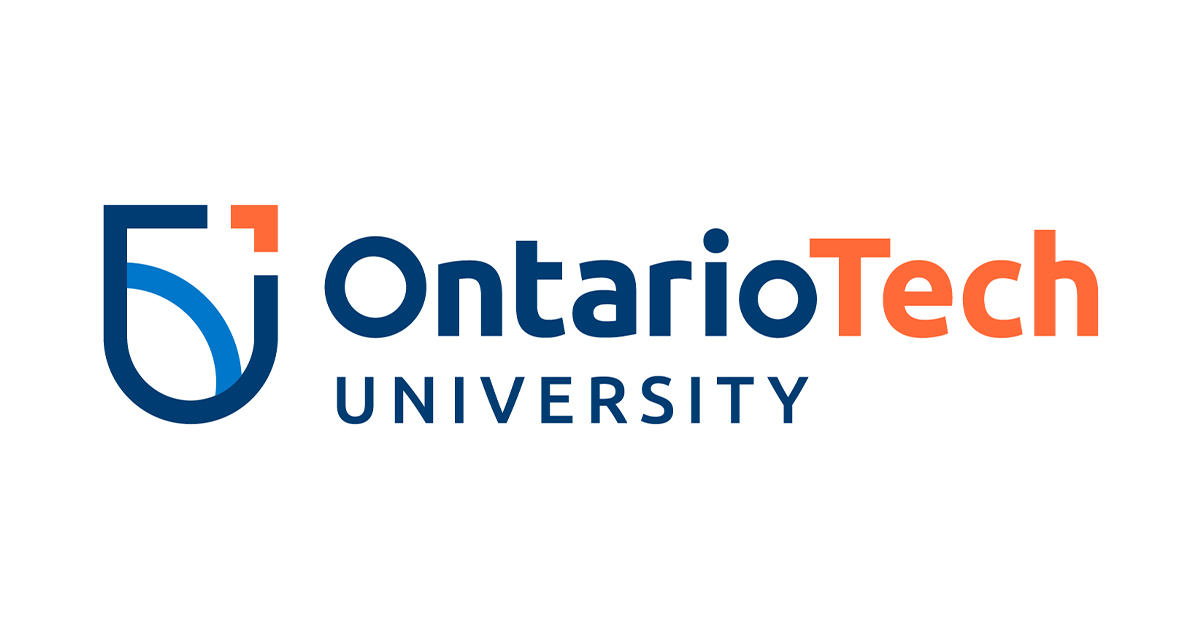
Akira Tokuhiro
PhD
Professor
Prominent nuclear design, engineering and safety expert brings leadership and severe nuclear accident analytics skills to ║┌┴¤═°
Languages
English, Japanese
akira.tokuhiro@ontariotechu.ca
905.721.8668 ext. 3142
- PhD - Nuclear Engineering Purdue University, USA 1991
- MS - Mechanical Engineering University of Rochester, USA 1984
- BS - Engineering Science (Physics) Purdue University, USA 1981
Simulation-based Stochastic Optimization of a Dry, Used Nuclear Fuel Storage Array for Nuclear Criticality Safety
Charlotte, North Carolina September 13, 2015International Conference on Nuclear Criticality Safety
Branch-and-Bound Algorithm Applied to Dynamic PRA with Uncertainty Quantification for LWR Station Blackout
Tokyo, Japan May 17, 201523rd International Conference on Nuclear Engineering, ICONE-23
CFD Analysis of the ┬╝-Scale Air Reactor Cavity Cooling System with Focus on the Inlet Plenum
Tokyo, Japan May 17, 201523rd International Conference on Nuclear Engineering, ICONE-23
Characterizing Single- to Two-Phase Flow Behavior in a Crosscutting RCCS Design with Decay Heat Variation
Tokyo, Japan May 17, 201523rd International Conference on Nuclear Engineering, ICONE-23
Emerging Regulatory Requirements and Industry Practices on Emergency Preparedness in the Post-Fukushima Operations Era
Tokyo, Japan May 17, 201523rd International Conference on Nuclear Engineering, ICONE-23
Lesson Learnt from Fukushima
Charlotte, North Carolina May 5, 20145th Annual Nuclear Supply Chain Conference
Supply Chain Management in the Global Market, Bridging the Divide Between Vendor, Utility and Supplier
Shanghai-Suzhou, China September 11, 2013Nuclear Exchange 2013
The Realities and Consequences of the Post-Quake and Tsunami Fukushima NPP Incidents
MECC Conference Centre, Maastricht, Netherlands November 29, 2011Nuclear Exchange 2011
Production of Energetic Light Fragments with Expanded Cascade Exciton Model (CEM)
Reno, Nevada June 15, 20142014 ANS Annual Meeting
Is the Food in Safe in Japan?
American Chamber of Commerce, Tokyo, Japan October 5, 2011American Chamber of Commerce Japan Conference, Meeting on Food Safety (Post-Fukushima)
Branch-and-Bound Algorithm Applied to Uncertainty Quantification of a Boiling Water Reactor Station Blackout
Published in Nuclear Engineering and Design December 15, 2015Joseph Nielsen, Akira Tokuhiro, Robert Hiromoto & Lei Tu
Evaluation of the impacts of uncertainty and sensitivity in modeling presents a significant set of challenges in particular to high fidelity modeling. Computational costs and validation of models creates a need for cost-effective decision making with regards to experiment design. Experiments designed to validate computation models can be used to reduce uncertainty in the physical model. In some cases, the large uncertainty in a particular aspect of the model may or may not have a large impact on the final results.
Optimization Method to Branch-and-Bound Large SBO State Spaces Under Dynamic Probabilistic Risk Assessment via Use of LENDIT Scales and S2R2 Sets
Published in Journal of Nuclear Science and Technology June 17, 2014Joseph Nielsen, Akira Tokuhiro, Robert Hiromoto & Jivan Khatry
Traditional probabilistic risk assessment (PRA) methods have been developed to evaluate the risk associated with complex systems; however, PRA methods lack the capability to evaluate complex dynamic systems. In these systems, time and energy scales associated with transient events may vary as a function of transition times and energies to arrive at a different physical state. Dynamic PRA (DPRA) methods provide a more rigorous analysis of complex dynamic systems.
Comparison Between Single- and Two-Phase Heat Transfer in a Thermally Stratified Enclosure
Published in International Journal of Thermal Sciences June 1, 2015Izumi Hagiwara, A.Tokuhiro & P.G.Oduor
The ratio of local Nusselt number of two-phase natural convection, Nuy, two, to local Nusselt, Nuy, single, number of single-phase natural convection was empirically determined. Gelatin particles were immersed in a custom-built rectangular enclosure. With one end maintained at a thermal high, the particles settling and thermal enhancement characteristics were analyzed.
Natural Convection Heat Transfer of Hydrophilic Particle Suspension: Implications on Nuclear Waste Remediation
Published in International Journal of Heat and Mass Transfer November 1, 2014Izumi Hagiwara, A.Tokuhiro & P.G.Oduor
Natural convection of gel suspension has the potential to be applied to particulate recovery systems, such as in the dynamic filtering of radioactive waste particles. In this study, experiments were conducted to assess natural convection of gradually settling gelatin particle suspension in a rectangular cell, relative to single-phase natural convection with bulk temperature stratification, and to derive empirically a transfer relationship.
Effects of Adverse and Favorable Pressure Gradients on Entropy Generation in a Transitional Boundary Layer Region Under the Influence of Freestream Turbulence
Published in International Journal of Heat and Mass Transfer October 1, 2014E.Ghasemi, D.M. McEligot, K.P. Nolan, J. Crepeau, A. Siahpush, R.S.Budwig & A.Tokuhirob
Fundamental understanding of the entropy generation process in characteristic wall shear flows is developed. For entropy generated by fluid friction, the rates are predictable for developed turbulent flows and pure laminar flows. The main concern lies in prediction for flows undergoing so-called ÔÇ£bypassÔÇØ transition from laminar to a turbulent state. In this study, the entropy generation process in the bypass transition scenario is investigated for a flat plate boundary layer under the effects of adverse and favourable pressure gradients.
Morphological Analysis of Zirconium Nuclear Fuel Retaining Rods Braided with SiC: Quality Assurance and Defect Identification
Published in Journal of Nuclear Materials January 1, 2014Michael V. Glazoff, Robert Hiromoto & Akira Tokuhiro
In the after-Fukushima world, the stability of materials under extreme conditions is an important issue for the safety of nuclear reactors. Among the methods explored currently to improve zircaloys' thermal stability in off-normal conditions, using a protective coat of the SiC filaments is considered because silicon carbide is well known for its remarkable chemical inertness at high temperatures. A typical SiC fiber contains ~50,000 individual filaments of 5 ÔÇô 10 ┬Ám in diameter. In this paper, an effort was made to develop and apply mathematical morphology to the process of automatic defect identification in Zircaloy-4 rods braided with the protective layer of the silicon carbide filament.
Ultra-High Temperature Steam Corrosion of Complex Silicates for Nuclear Applications: A Computational Study
Published in Journal of Nuclear Materials January 1, 2014Sergey N.Rashkeev, Michael V.Glazoff & Akira Tokuhiro
Stability of materials under extreme conditions is an important issue for safety of nuclear reactors. Presently, silicon carbide (SiC) is being studied as a cladding material candidate for fuel rods in boiling-water and pressurized water-cooled reactors (BWRs and PWRs) that would substitute or modify traditional zircaloy materials. The rate of corrosion of the SiC ceramics in a hot vapour environment (up to 2200 ┬░C) simulating emergency conditions of light water reactor (LWR) depends on many environmental factors such as pressure, temperature, viscosity, and surface quality.
Oxidation and Hydrogen Uptake in Zirconium, Zircaloy-2 and Zircaloy-4: Computational Thermodynamics and Ab Initio Calculations
Published in Journal of Nuclear Materials January 1, 2014Michael V. Glazoff, Akira Tokuhiro, Sergey N. Rashkeev & Piyush Sabharwall
Zirconium-based alloys Zircaloy-2 and Zircaloy-4 are widely used in the nuclear industry as cladding materials for BWRs and PWRs, respectively. Over more than 60 years these materials displayed a very good combination of properties such as low neutron absorption, creep behaviour, stress-corrosion cracking resistance, reduced hydrogen uptake, corrosion, and/or oxidation, especially in the case of Zircaloy-4 [1ÔÇô3]. However, over the last couple of years, energetic efforts were undertaken to improve their oxidation resistance during off-normal temperature excursions, as well as to further improve upon the already achieved levels of mechanical behaviour and reduced hydrogen uptake [1ÔÇô3].
Influences of Boil-Off on the Behavior of a Two-Phase Natural Circulation Loop
Published in International Journal of Multiphase Flow April 1, 2014D. D. Lisowski, O. Omotowa, M. A. Muci, A. Tokuhiro, M. H. Anderson & M. L. Corradini
This experimental study investigates the thermal-hydraulic behaviour and boiling mechanisms present in a natural circulation loop experiencing boil-off. Extended duration tests with inventory loss were conducted to examine the transient behaviour of a test loop under constant heat load.
Computational and Experimental Prediction of Dust Production in Pebble Bed Reactors, Part II
Published in Nuclear Engineering and Design October 1, 2013Mie Hiruta, Gannon Johnson, Maziar Rostamian, Gabriel P. Potirnichea, Abderrafi M. Ougouag, Massimo Bertino, Louis Franzel & Akira Tokuhiroa
This paper is the continuation of Part I, which describes the high temperature and high-pressure helium environment wear tests of graphiteÔÇôgraphite in frictional contact. In the present work, it has been attempted to simulate a Pebble Bed Reactor core environment as compared to Part I. The experimental apparatus, which is a custom-designed tribometer, is capable of performing wear tests at PBR relevant higher temperatures and pressures under a helium environment.
Donald Crawford Graduate Faculty Mentoring Award
University of Idaho April 1, 2014Dr. Tokuhiro was honoured for his efforts to mentor graduate students.
